Overview
Introduced in 1968, the Tone Bender MKIII was the latest incarnation of the series of Tone Benders that Sola Sound had been supplying to Vox (among other brands) since 1966. By the time that Sola Sound were producing the MKIII, their fuzz boxes were no longer being built into cast aluminium enclosures, and instead, the MKIII appeared in a pressed steel casing. These newer enclosures were painted in a dark grey hammertone finish, and were printed with a far livelier and attractive set of silk-screened graphics.
Sola Sound continued to supply Vox with the Tone Bender MKIII until well into the 1970s, with the fuzz circuit undergoing various further changes over the years. Pedals that are formally labelled as ‘Vox Tone Bender MKIII’ could have been built with any one of at least three entirely different fuzz circuits, and the only way to recognise the specific type of MKIII is by inspecting a pedal’s cosmetic features and/or the electronics inside.
Tone Bender MKIII ‘with treble ‘n’ bass boost’

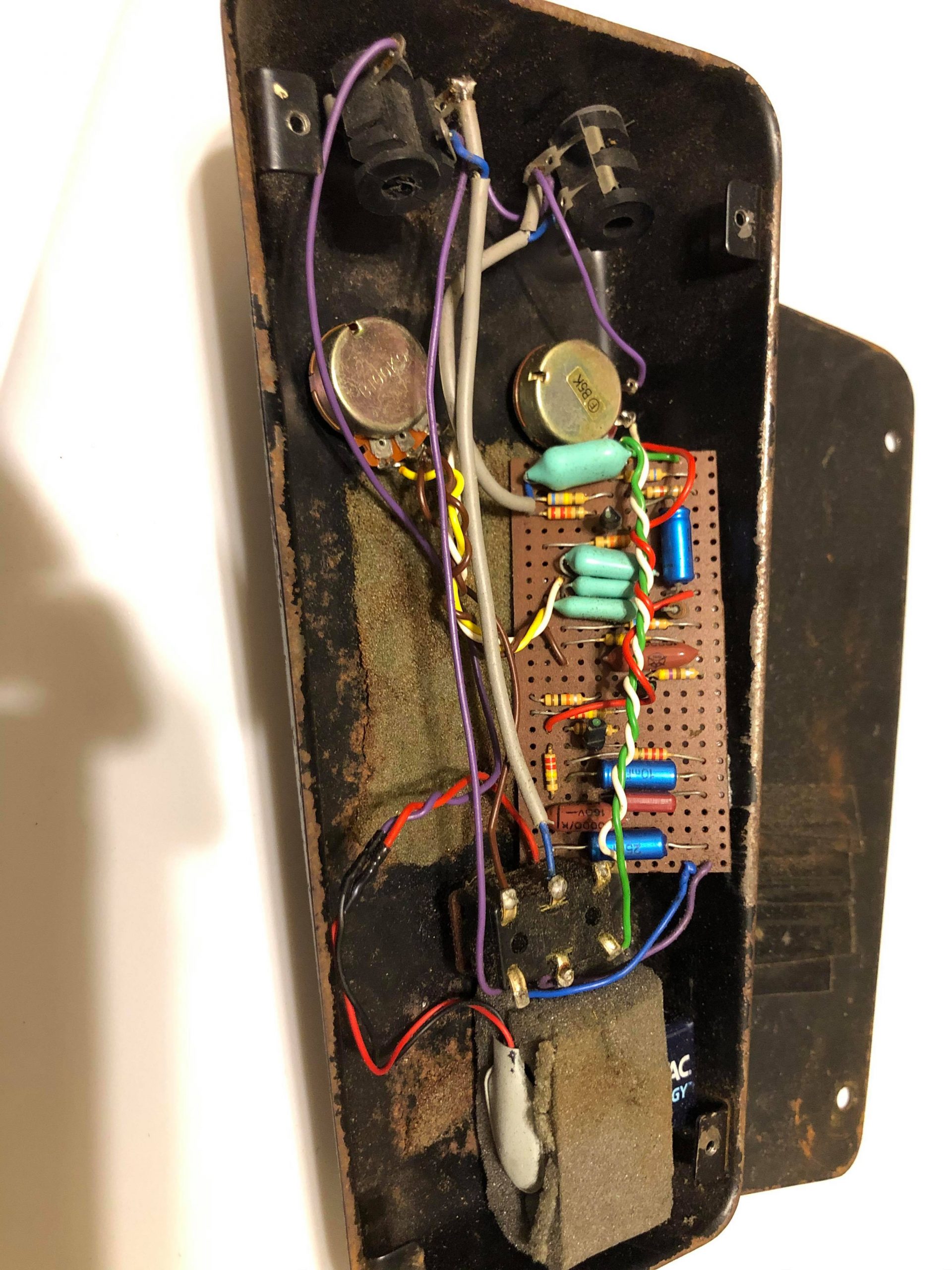

Some of the earliest Vox Tone Bender MKIII fuzz boxes were built with a silicon transistor circuit, and featured only two control knobs. These Tone Benders, ‘with treble ‘n’ bass boost’, were in production by August of 1968, when a Tone Bender MKIII with only two controls was demonstrated at the British Musical Instrument Industries trade fair at the Russell Hotel in London.1 (Photo credit: J. Bagwell)
The electronic circuit in these pedals is unlike any other fuzz box design known thus far. The two controls allow for the user to vary the volume and the tone of the fuzz sound, and what makes this model particularly unusual is that the tone control continues to function even when the pedal is disengaged in the signal path.
Tone Bender MKIII pedals “plus Bass and Treble Boost” were still being advertised in the press by early 1969,2 but it is unknown how long exactly the model remained in production. The small number of surviving pedals suggests that the two-knob Tone Bender MKIII was only a relatively limited offering.
Tone Bender MKIII, germanium transistors

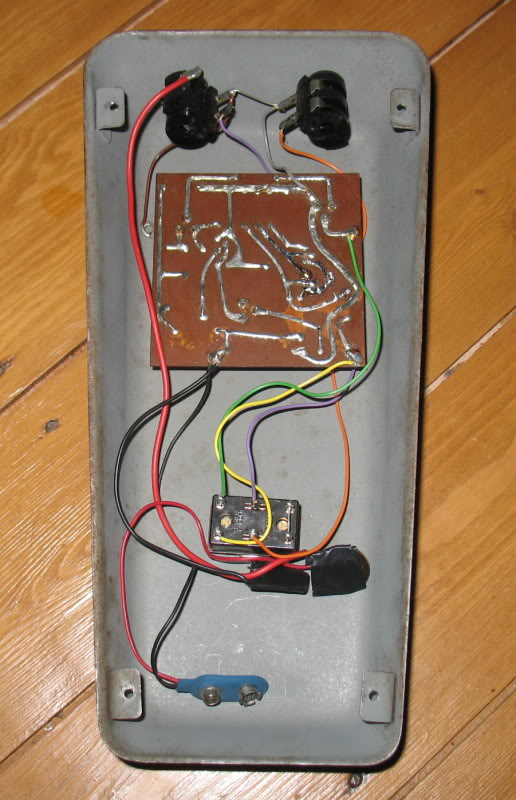
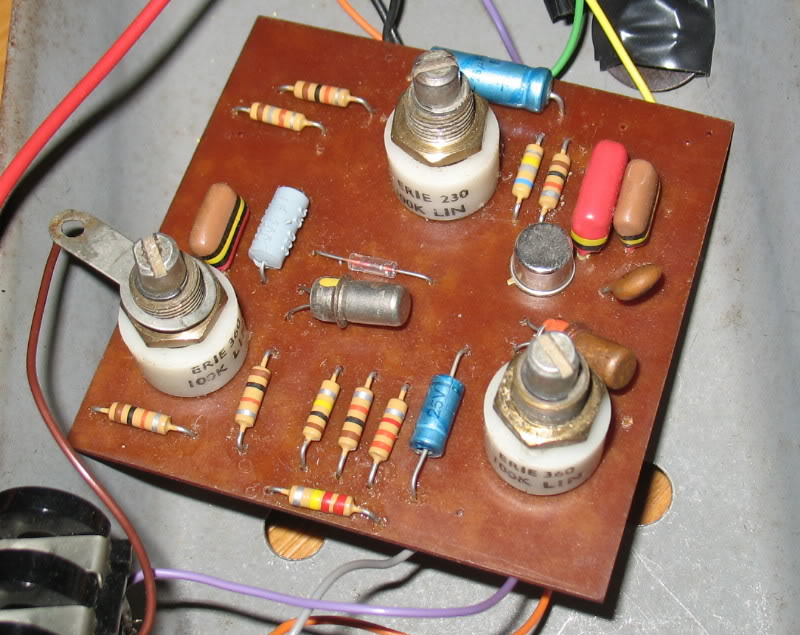
By the end of the 1960s, Sola Sound started building Tone Bender MKIII fuzz boxes with what would become one of their most successful circuit designs. This version of the Tone Bender MKIII featured a germanium transistor circuit that was loosely based on the earlier Baldwin-Burns Buzzaround. It came with adjustable controls for the volume, amount of fuzz, and tone of the effect. (Photo credit: S. Castledine)
The same germanium transistor circuit that Sola Sound built into these three-knob Vox Tone Benders, between the late 1960s through to approximately the mid-1970s, was also supplied to companies like Rotosound & Park for their own versions of the Tone Bender MKIII. Sola Sound also sold the Tone Bender MKIII under their own company’s brand name for a limited period of time, before developing their Tone Bender MKIV.
Tone Bender MKIII, ‘Hastings’ edition

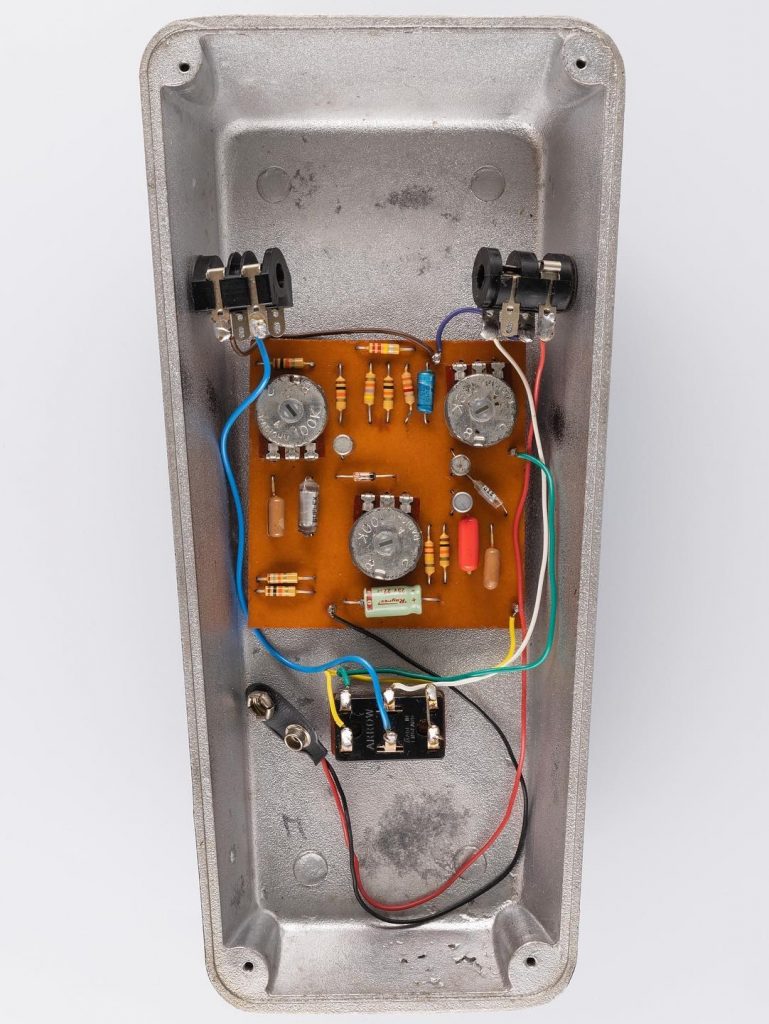

For a short period of time in the early 1970s, the Vox Tone Bender MKIII was built into a cast aluminium version of the familiar ‘MKIII’ enclosure, instead of in Sola Sound’s pressed steel casings. These cast enclosure pedals featured the same germanium transistor fuzz circuit as Sola Sound’s pressed steel pedals, but they were fitted with stickers noting the address for the new factory set up for ‘Vox Sound Limited’ (VSL) in Hastings, Sussex. It’s likely that these pedals were manufactured ‘in-house’ by VSL, based on Sola Sound’s design, rather than by Sola Sound themselves. (Photo credit: A. Souleyman)
For more information about Vox Sound Ltd, please see the excellent Vox Supreme website.
Tone Bender MKIII, silicon transistors
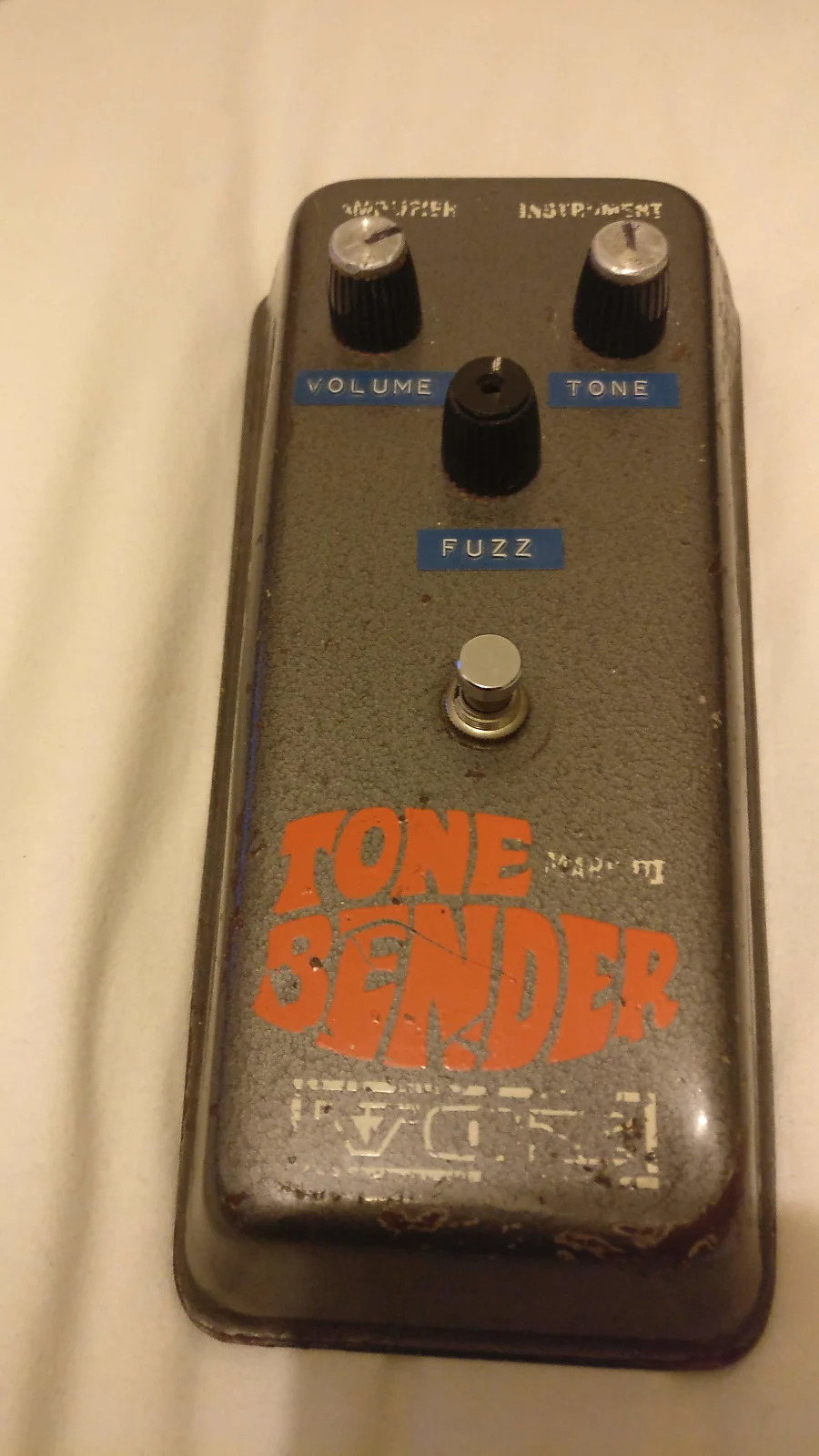
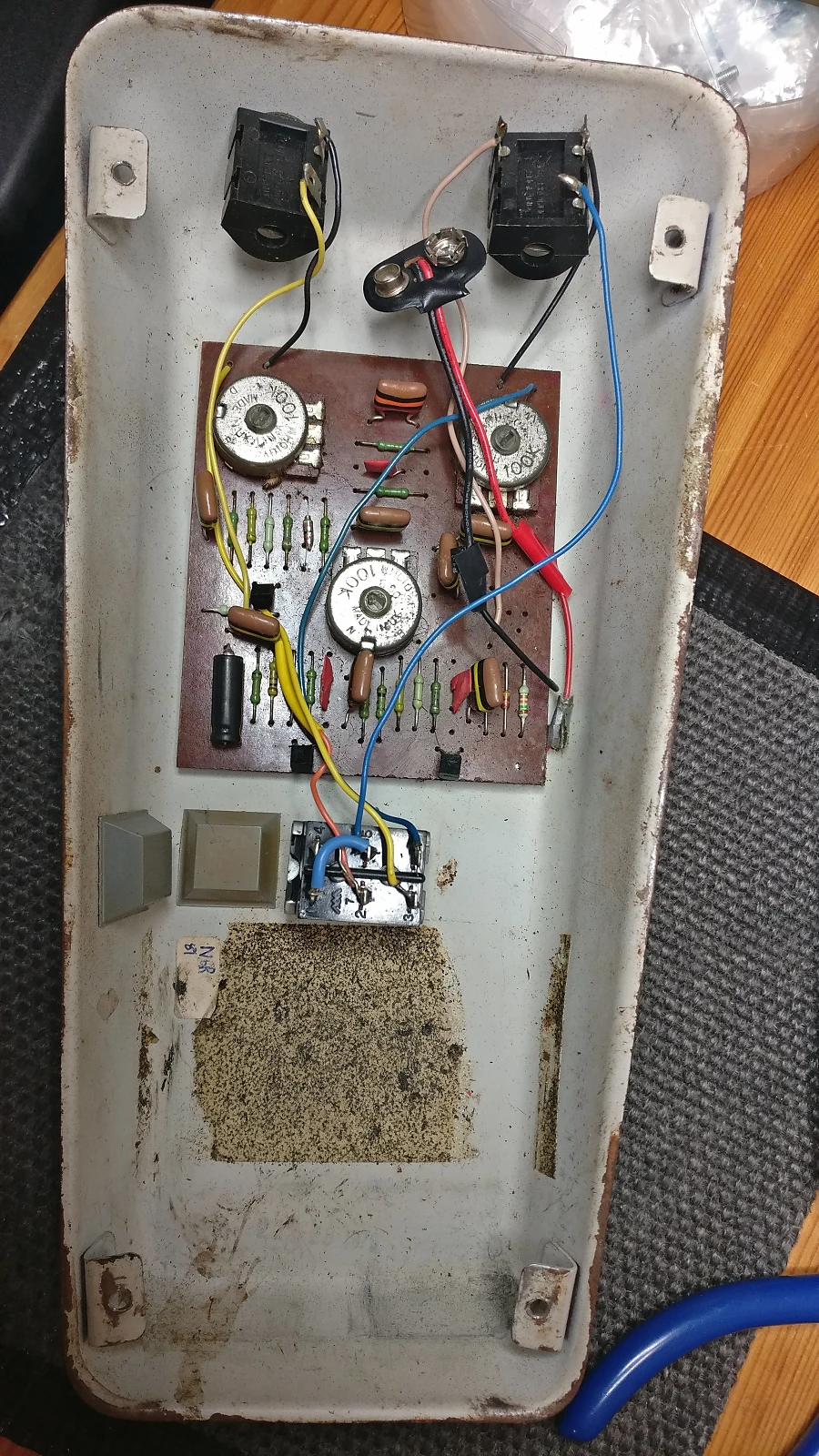
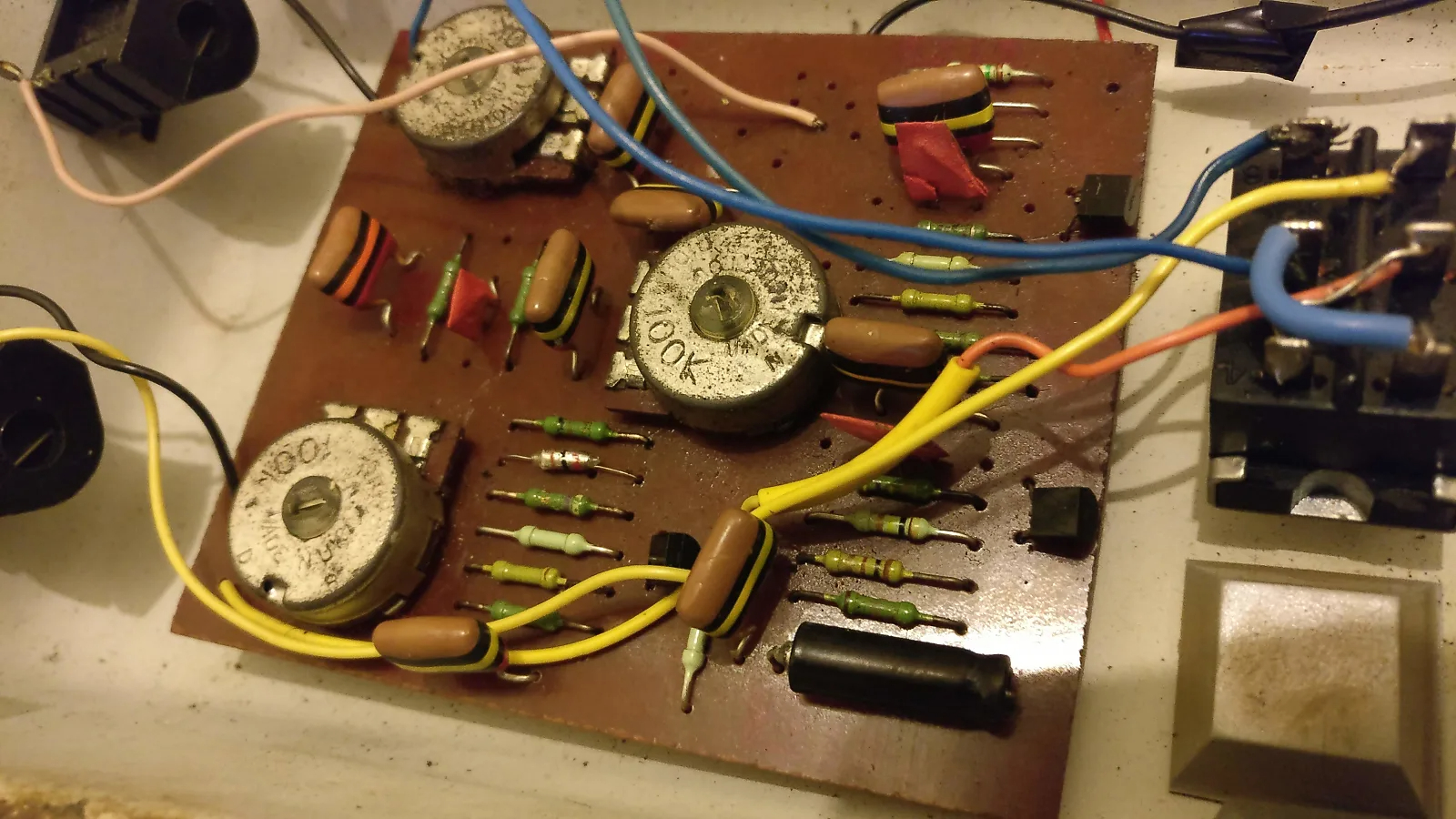
The youngest of the Vox Tone Bender MKIII pedals featured a silicon transistor circuit, based around the Electro-Harmonix Big Muff Pi design. These pedals were supplied to Vox by Sola Sound approximately during the mid-to-late 1970s, and were identical to Sola Sound’s own Colorsound Jumbo Tone Bender pedals. (Photo credit: Woody’s Gear World/Reverb.com)
Share your fuzz!
I welcome any comments, feedback, queries & corrections in relation to the Fuzzboxes.org project. Please get in touch via this contact form (or on the ‘contact‘ page).
Much of our understanding of the development of 1960s fuzz boxes comes from analysis of surviving pedals themselves, and so photos of pedals belonging to readers are particularly useful in furthering this research.
If you would like to contribute pictures of 1960s-era guitar effects to Fuzzboxes.org, then feel free to send in any pictures via the uploader below. Photos are greatly appreciated, and any submissions are not published on this website without advance agreement with the contributor.
